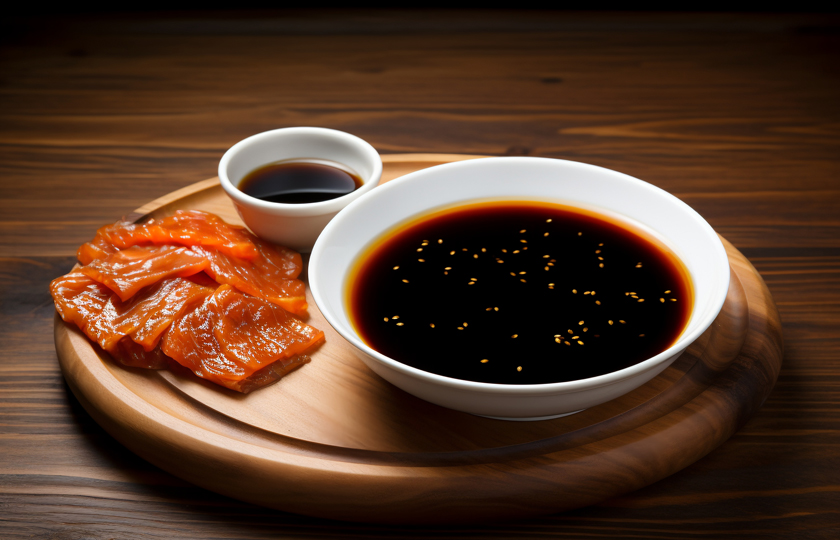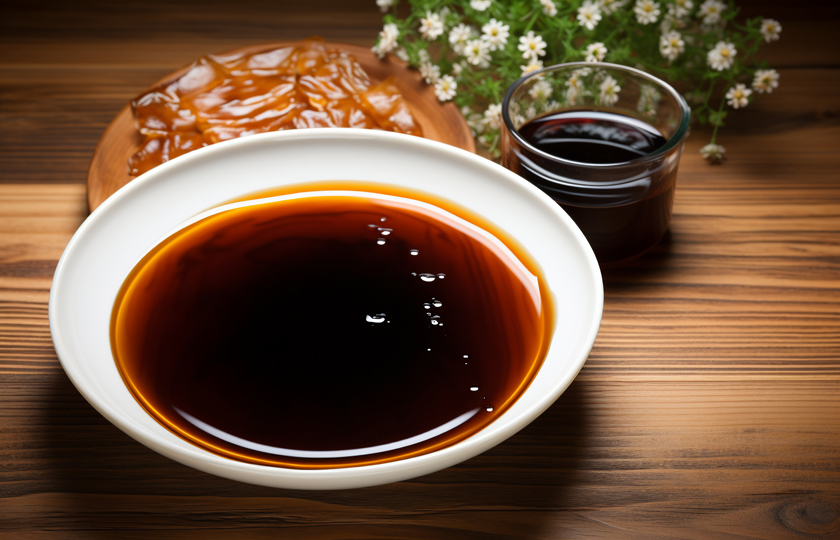Kitchen Secrets: Can You Freeze Soy Sauce?

Once there was a big promotion in the supermarket. I bought several bottles of soy sauce. But the daily consumption of soy sauce is not much. So I was thinking about a question. Can soy sauce be frozen?
Can soy sauce be frozen?
It is not recommended to freeze soy sauce.
Because freezing will change the state of the components of soy sauce, resulting in stratification and uneven texture. At the same time, its flavor will weaken, the taste will deteriorate, and the quality will decline.
In cooking, it will also be difficult to control the amount and seasoning and coloring effects due to changes in texture and components.
Does Soy Sauce Freeze?
Soy sauce will not completely freeze.
This is because in addition to water, soy sauce also contains a large amount of salt, amino acids, sugars and other components. These substances dissolved in water will lower the freezing point of water and act like an antifreeze.
Even if put in the freezer, soy sauce usually only becomes thicker or presents a semi-frozen state rather than forming a hard ice cube.
How Should Soy Sauce Be Stored?
Unopened soy sauce
Should be placed in a cool, dry and ventilated place, avoiding direct sunlight and high temperature. Generally, it can be stored for 1 to 2 years.
Opened soy sauce
Sealed and stored away from light: After opening, soy sauce is recommended to be used up within 6 months. After each use, make sure the bottle mouth is tightly closed to prevent moisture and pollution.
Consider refrigerated storage: If the indoor environment temperature is too high or the humidity is too large, or the soy sauce has been opened for a long time, you can consider putting the soy sauce in the refrigerator for storage.

How Can You Tell If Soy Sauce Has Gone Bad?
In terms of color:
Normal soy sauce is mostly reddish-brown or tan. If the color becomes very light or yellowish, it may be spoiled.
For example, high-quality soy sauce has a uniform color and luster. If the color is uneven and there are dark patches or white and gray turbidity, pay attention.
Sediment Condition:
A small amount of sediment is normal, but if there's an excessive amount of sediment, or if you notice flocculent or chunky particles, white foam on the surface, or mold spots, it indicates that the soy sauce has spoiled.
Odor discrimination:
Normal soy sauce has a strong sauce aroma. If you smell a sour, rancid or other pungent odor, it means that the soy sauce has deteriorated.
Check the shelf life:
If it exceeds the shelf life indicated on the packaging, even if there is no obvious change in appearance and smell, it may have deteriorated.
Can expired soy sauce be eaten?
It is not recommended to eat expired soy sauce.
From the perspective of food safety, expired soy sauce may have bred a large number of harmful microorganisms such as bacteria and molds. After these microorganisms enter the human body, they may cause physical discomfort.
In terms of quality, the flavor of expired soy sauce will deteriorate, the color may change, the sauce aroma will weaken, and there may also be rancid and other peculiar smells. It cannot provide normal seasoning effects when used for cooking.
Types of Soy Sauce
There are many kinds of soy sauce. Here are some common ones:
1. Light soy sauce
Uses: Suitable for stir-frying, mixing in salads, seasoning, and dipping sauces.
2. Dark soy sauce
Uses: Commonly used in marinated dishes, braised dishes, and dishes that require coloring.
3. Sweet soy sauce
Uses: Widely used in making sweet sauces, such as sauces and seasonings in some Southeast Asian or Taiwanese cuisines.
4. Soy sauce paste
Uses: Mainly used for dipping sauces, spreading on ingredients, or as the base for other sauces.
5. Black soy sauce
Uses: Mainly used for coloring and providing a sweeter taste. Commonly seen in some stewed or grilled dishes.
6. Seafood soy sauce
Uses: Suitable for dipping and mixing in seafood dishes, such as steamed river fish and seafood.
7. Steamed fish soy sauce
Uses: Mainly used for Cantonese dishes such as steamed fish and steamed seafood, which can significantly enhance the flavor of dishes.

Tips for Using Soy Sauce
1. For stir-frying: Usually add soy sauce when the dish is almost cooked and stir evenly to avoid high temperature destroying the freshness of soy sauce.
2. For stewed dishes: Such as stewed meat and stewed fish, soy sauce can be added in the middle or when the meat is seven-tenths cooked to make the taste fully penetrate while keeping the meat tender.
3. For braised dishes: Add soy sauce before the dish is about to be served and simmer over low heat to make the dish bright in color and rich in aroma.
4. For cold dishes: Before serving the dish, mix soy sauce evenly with other seasonings and then pour it on the dish to avoid adding it too early and making the dish too salty.
Precautions: Avoid boiling soy sauce for a long time at high temperature. Adjust the amount of soy sauce according to personal taste. Pay attention to the color requirements of the dish and avoid using too much soy sauce to make the dish color darker.























